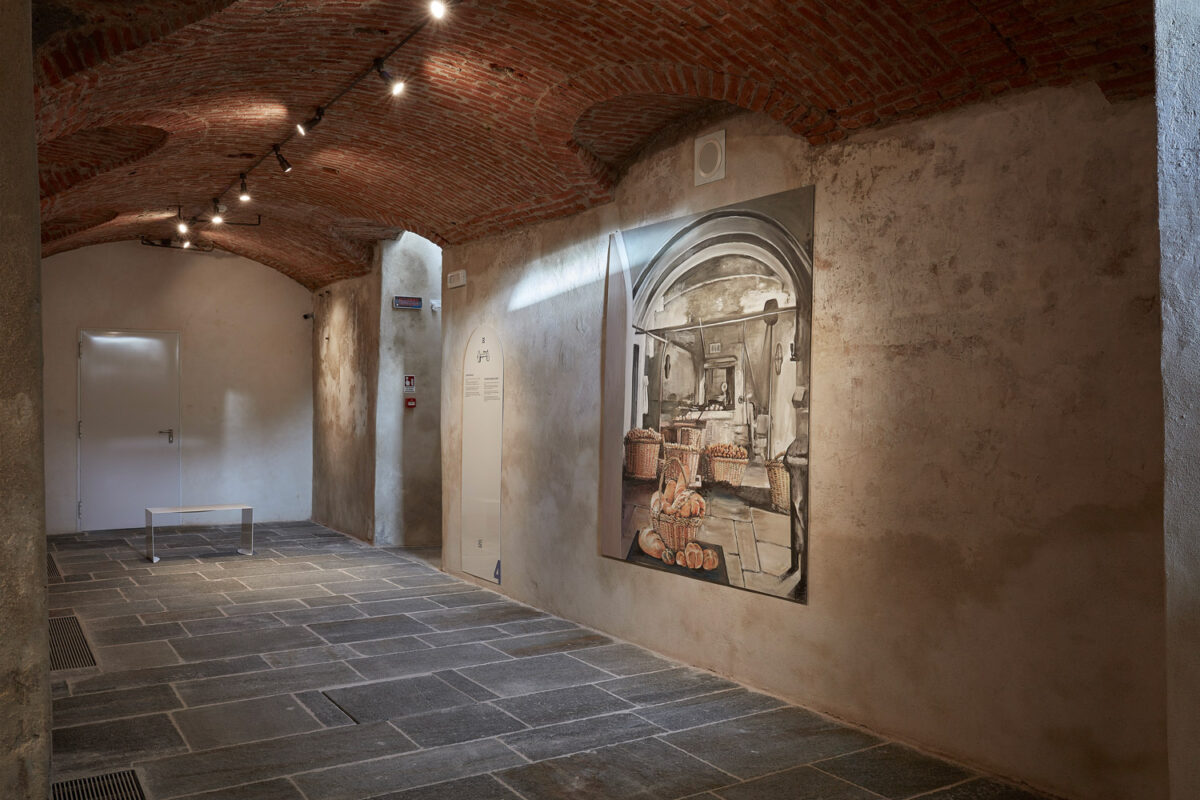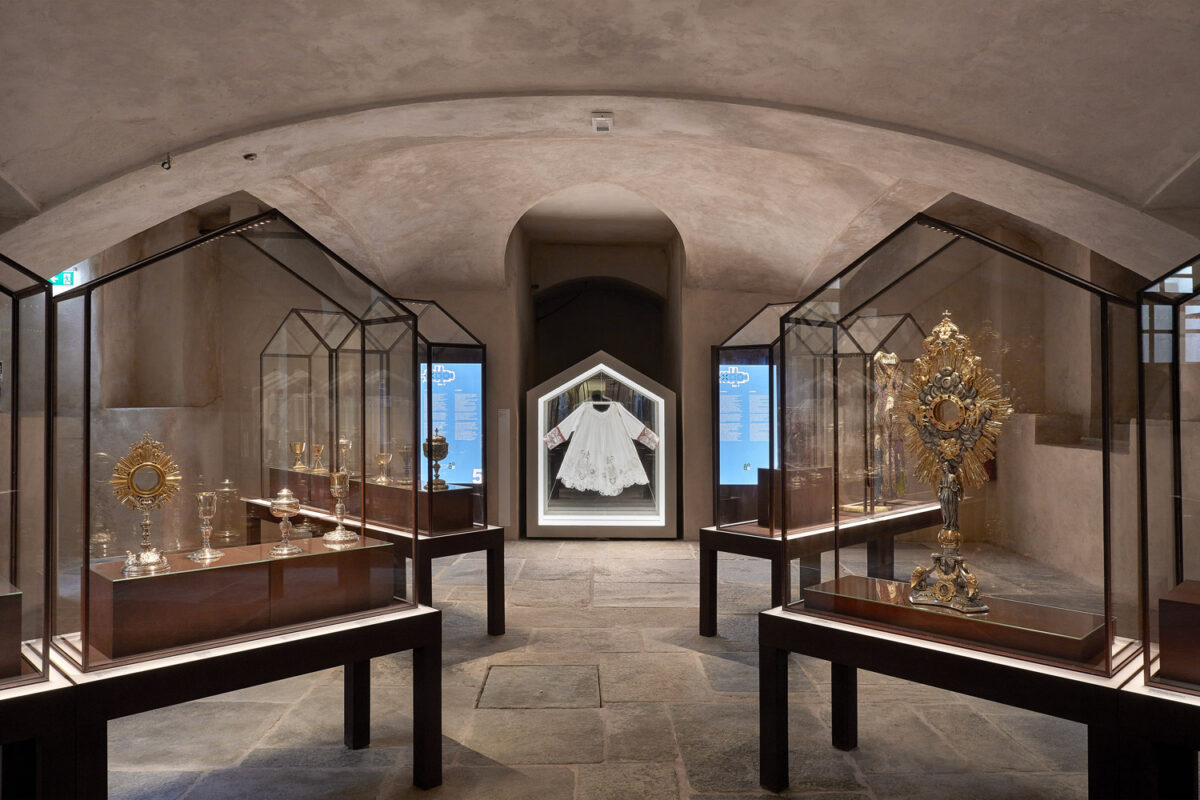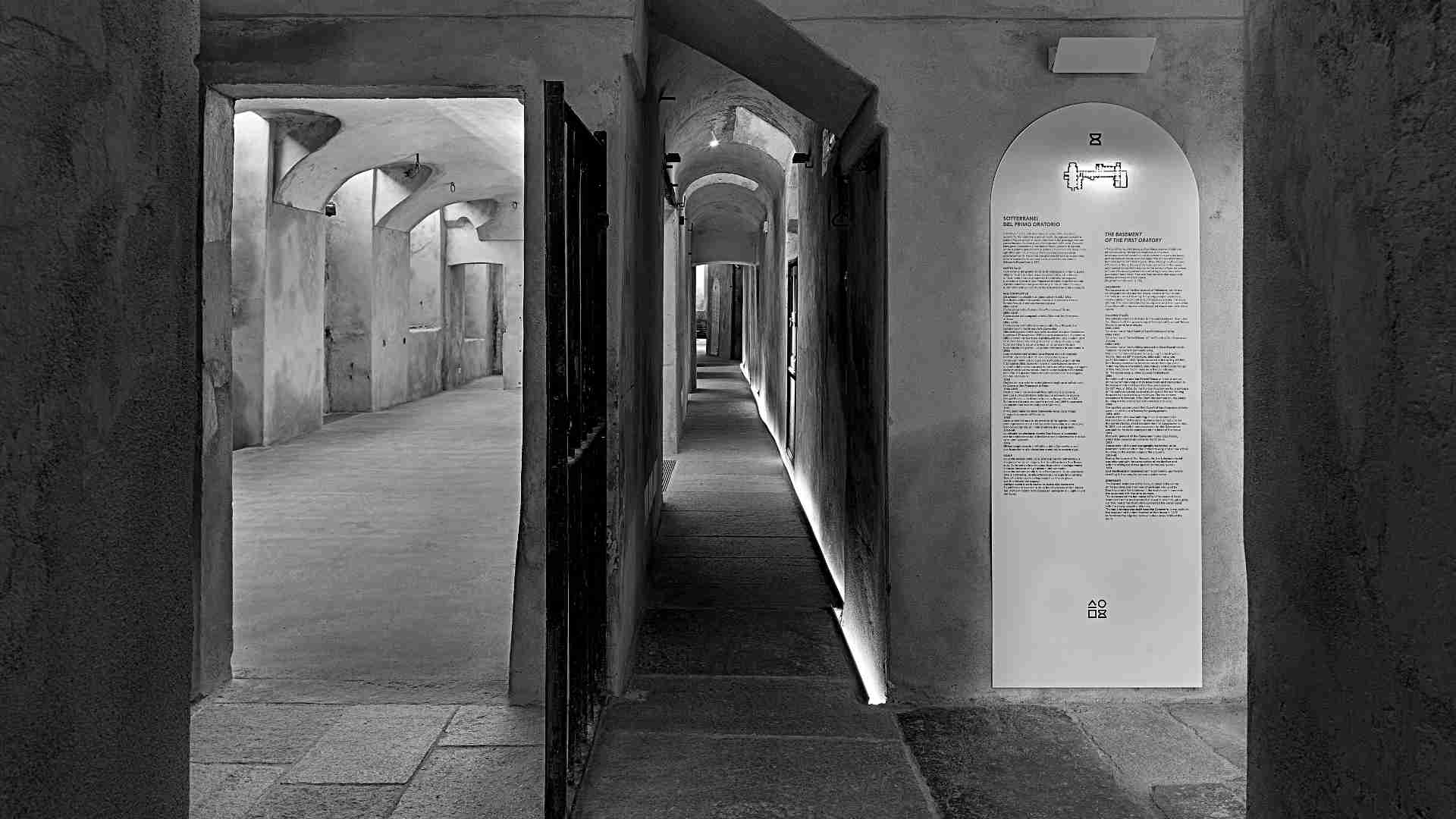The tour of Casa Don Bosco Museum begins where daily life at the first Oratory happened, in the basement with its four rooms and two service areas: the wine cellar, the kitchen, two dining halls for the boys, and the crypto portico leading to the bread.
The Oratory’s wine cellar was built between 1860-1861 and stored the barrels and wine presses used for making wine. Window-like openings in the cantina’s ceiling allowed the grapes to be dropped into the presses from the courtyard above.
This space now exhibits a collection of Marian statues representing the 133 countries where the Salesian Family is present around the world.
The first room next to the wine cellar is the boys’ first dining hall. All the Oratory boys ate here from 1854 to 1858, until a second dining hall was set up under the church of St. Francis de Sales. On the west wall is a print from the 1850’s in its original frame. It depicts Leonardo da Vinci’s Last Supper and most likely hung in one of the community’s first dining rooms. Originally, this room was wider until Don Bosco built the corridor to connect the entire basement with the wine cellar.
Next comes the Oratory kitchen. It was built in 1856 with basic but functional amenities: a brick pantry, a well which is also connected to the courtyard fountain, and a brick oven. By 1858, it was providing hot meals for a community that had grown to about 220 people. Beside the kitchen is a small service area in which a contemporary bas-relief depicts the room’s historical function.
The wide perpendicular corridor, with its brick vaulted ceiling, led to a bread oven. It was built around 1870 as part of the first enlargement to the Basilica’s worship space and basement after the church’s consecration in 1868. The corridor provided a service area where the freshly baked bread was prepared for distribution to the tables. At its peak, the oven produced 3000 loaves of bread daily.

At the end of corridor is the second students’ dining hall under the church of St. Francis de Sales. This space was converted into a dining hall in autumn 1858. It also functioned as the Oratory’s theatre until 1866.

Today, the space gathers four thematic exhibits: Marian Iconography, Gifts to the Basilica, Popular Piety, and Liturgy.
Notable works in the Marian Iconography Collection are the canvas of the Child Mary (Paolo Emilio Morgari, 1815-1882), a Deposition (attributed to Guido Reni, 1575-1642), a Mary in Ecstasy (Giandomenico Tiepolo, son of Giambattista), two 18th-century Russian and Greek travel icons, frescoes from the 14th century, and various sculptures. The Gifts to the Basilica include a snuffbox belonging to Pope Pius VII (1814) and a copper book cover from an 8th century Lombard Book of the Gospels. The Popular Piety exhibit features procession banners, postcards, posters, commemorative medals, and ex-voto offerings which tell the story of popular devotion linked to Mary, Help of Christians. The Liturgy exhibit displays precious items linked with the life of faith throughout 150 years of worship at the Basilica. Of particular interest is the monstrance gifted to Don Bosco on his name day in 1875, a Roman Missal (1893) printed by the Salesian Press in Valdocco, on paper produced by the Mathi Paper Mill, which was founded by Don Bosco. The copy on display was rebound in 1906 in embossed leather with art nouveau accents.



FOLLOW US.
Facebook
Instagram
Youtube
Vimeo
Linkedin
Pinterest
Subscribe to our newsletter.
Receive updates on new exhibits, conferences and events at Casa Don Bosco Museum.